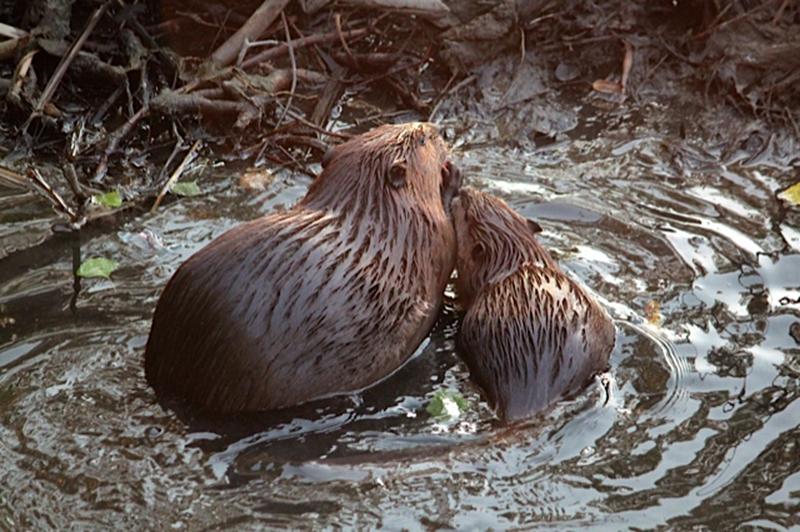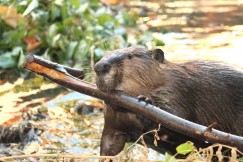
We’re approaching the anniversary of the last major flood in Martinez. On January 1, 1997 the heavy rains caused flooding on Alhambra Creek, running through the heart of downtown. Turning to San Luis Obispo, a Central Coast city with similar creek issues, Martinez developed a restoration plan that would turn their creek problem into an asset and help maintain a beautiful riparian corridor through the town. They succeeded so well that the beavers moved in!
The plump, sleek rodents with oversize front teeth live at the intersection of land and water. Beavers once existed in nearly every small stream in North America, including the Bay Area, but were hunted nearly to extinction by 1830. Second only to humans in their abilities to alter environments, beavers transform riparian ecosystems with their dam building skills. This led to their designation as a keystone species and “nature’s engineers.” With beavers at work in a creek, many more species are present than when beavers are absent.
I talked with Mark Ross from the Martinez City Council. “The beaver turmoil calmed down long ago. Where else can you see beavers within fifteen yards of parking meters?” Ross relayed that, “Flow devices to control the height of the beaver pond are vital to their success, allowing beavers to flourish in an urban area while helping to keep the dam at manageable levels.” He went on, “Beavers are the best ambassadors for Martinez since John Muir, who also made his home here. People come to look for them.”

The flow device maintains the beaver pond at the desired height. Heidi Perryman, founder and president of “Worth a Dam” and beaver advocate, explained, “Beavers are stimulated to keep raising the level of the pond when they hear water running over their dam. With the flow device in place, a simple yet effective bypass system invented by Skip Lisle, the beavers are satisfied with the dam height.”
She added, “The ecology of the area is improved with beavers present. Fish diversity increases due to a larger invertebrate population which draws other mammals including mink and otter to the beaver-created habitat. Even nesting song birds benefit from the brushy growth promoted by beavers chewing on the riparian trees.”
